Commencement marks a milestone in a student’s life that they’ll never forget.
As spring semester comes to a close, it’s important to consider how you want to record your community college’s commencement ceremony. Whether you’re looking to livestream the event or compile a stunning montage for future marketing efforts, having a plan in place can give you the best results for capturing your commencement.
If your college plans on filming their own commencement ceremony, there are a few different factors you should keep in mind. We sat down for a Q&A with Interact’s video team for some visual storytelling tips from the experts themselves. Our director of video services, Sara Sampey, and lead videographer, Jake Ammann, are ready to help you map out ways to record your commencement with their expert video tips!
Tips for Capturing Your Community College’s Commencement
Q: What’s the number one most important video tip to keep in mind when capturing a commencement on video?
Sara Sampey: I don’t know that there’s any one thing, and that’s what’s so tough about it. If I had to pick just one thing, I’d say remember it’s about the students. But, from a more technical standpoint, there are a lot of other aspects to consider. You want to make sure you have consent to record people, you want to make sure that you hit record …
Jake Ammann: There are a lot of moving parts whenever you’re filming a live event. But I guess it depends on how abstract of an answer you want for that question. Like Sara said, it’s about the students. But also, if you forget to hit record on the camera, then you don’t have a video!
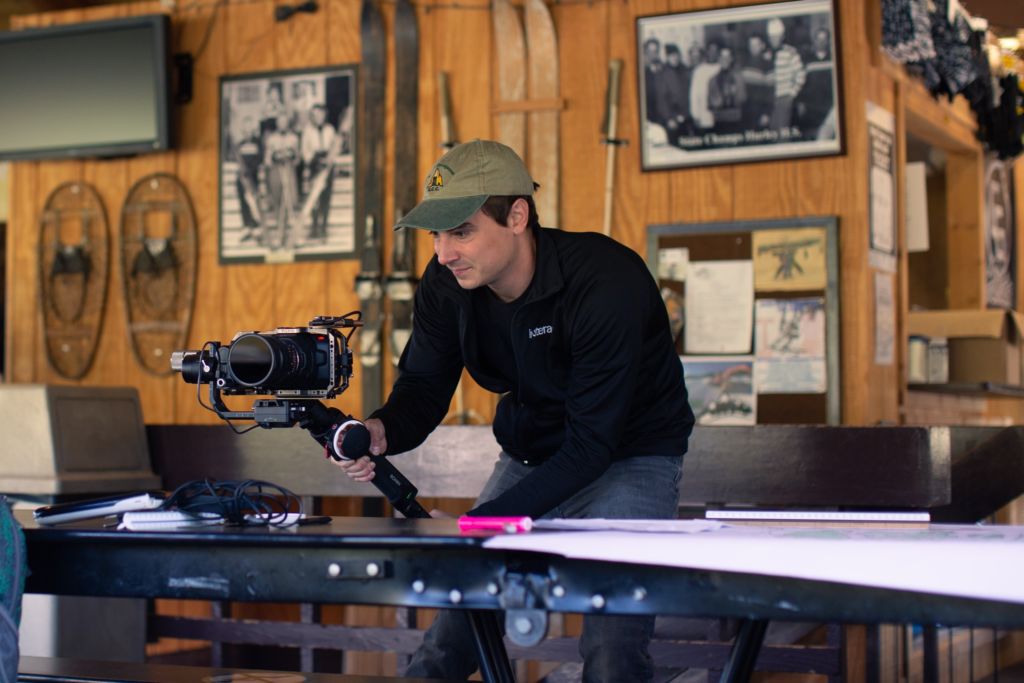
And then, it just depends on the resources. If you have multiple cameras, and you have people to run them, I’d say get some close-up shots of the people at the podium, but also get some wide shots to be able to cut between to keep the video interesting. It all depends on what resources you have available, and then you set up a game plan based on that.
Q: What are some video tips and tricks you might have for filming a large crowd?
Sara Sampey: I would say my number one — something that we always think about — is making sure that there is some sort of release waiver. With a large crowd, you probably can’t have everyone sign something like that. So, having signage up and outside of the area that you will be recording, letting them know you are.
I think that’s really important to make sure everyone is consenting and aware. It depends on what kind of video you’re filming. If you’re going for glamour shots, you would want to pick people who you see in the crowd that catch your eye, maybe zoom in on them, get those close-up shots. If you’re just trying to record a crowd in general, you’ll want to make sure you have a wider-angle lens.
Jake Ammann: Yeah, and I think that really comes down to what equipment you have available, too. Because if you’re doing it on a phone, the zoom generally isn’t very good, so you might want to just stick to wide shots.
But if you have a digital media department, maybe they could get students to do it for extra credit. Maybe they have a range of lenses, or maybe they can hire a company to do it. I would say bouncing between wide angles and zoomed-in shots to get more personal reactions on a telephoto lens and then some wider shots too, to establish where these zoom shots are. But it all depends on who’s doing it, what kind of video you want, and what equipment you have available.
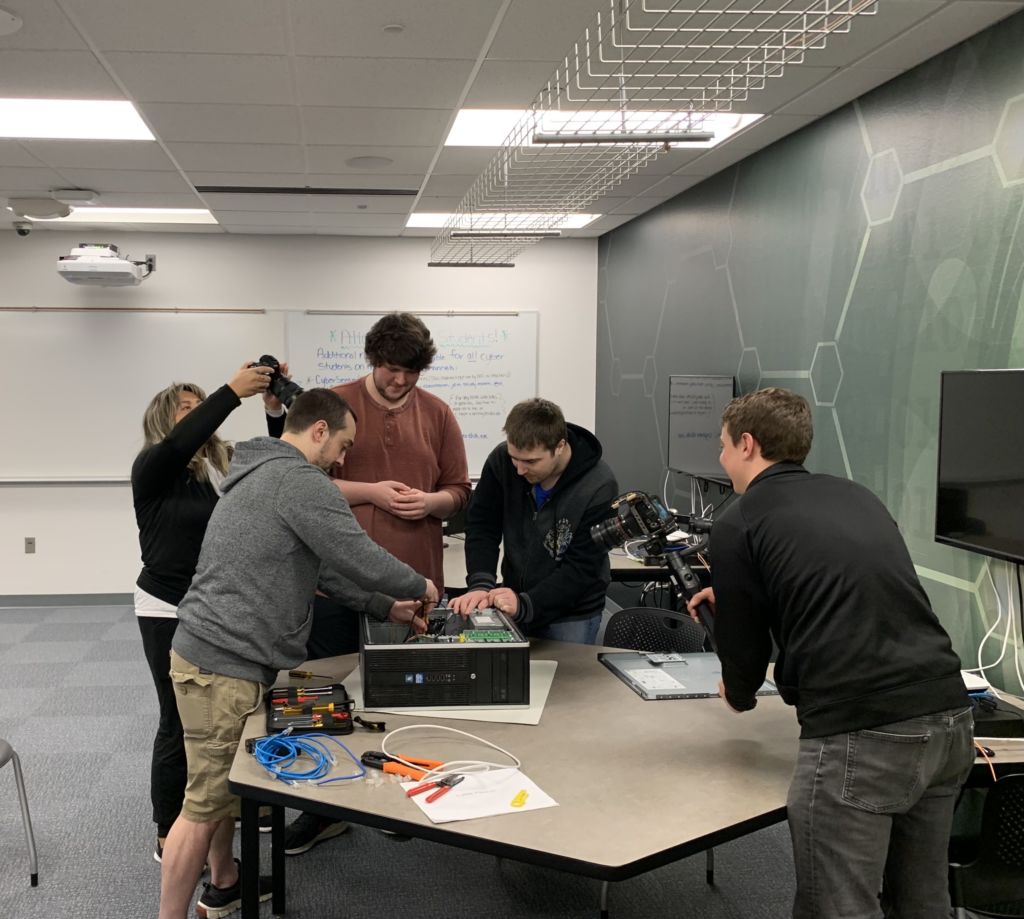
Q: Are there different laws by state about what you have to keep in mind when you’re filming large crowds?
Sara Sampey: Yeah. Not even just large crowds, but just crowds in general. It’s also going to depend. Everyone will probably know for their area, but even colleges have different policies.
Jake Ammann: I know some colleges tell us that students, just by signing up to be a student, that the college is covered. Basically, when their students sign up to go to school, they have a photo release. But then that probably doesn’t apply to their families. So, that’s something to keep in mind.
Q: How can colleges get the best commencement video footage, especially on a budget?
Sara Sampey: One way would be to hire Interact! However, I think there are a few ways you could come up with your own DIY kind of thing. You could always ask the students in your media department. Or, you could come up with a really interesting campaign where students in the audience — or even the audience itself — could record and submit their own videos under your branded hashtag on social media.
Jake Ammann: The more effort, and a lot of times, the more money you want to spend, the better quality product you’re going to get at the end. But it’s everything from filming on a phone, or, like Sara said, having people in the audience submit their own clips.
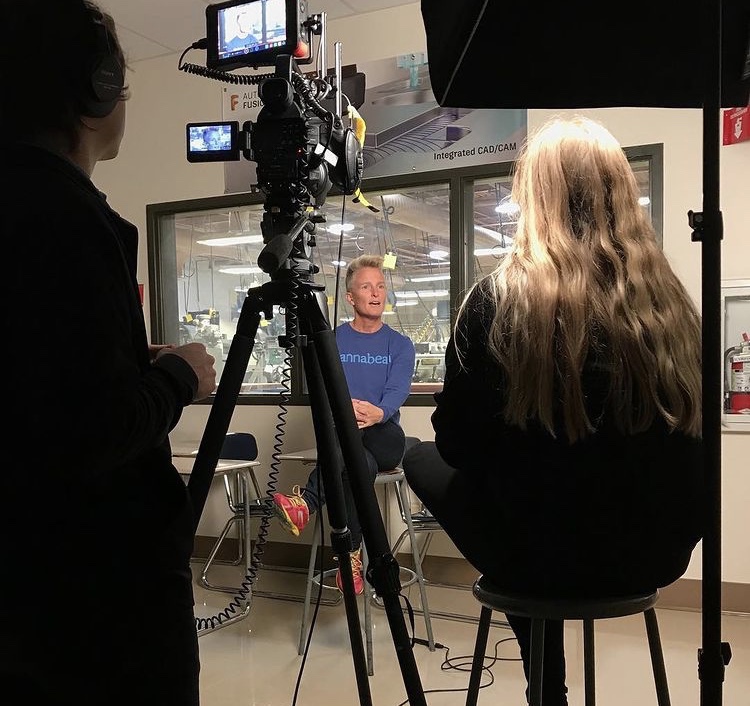
It also depends on what kind of video you want to do! For example, you could do a highlight reel. Or sometimes with live events, they want to record the whole thing, like how some people might do for a wedding ceremony video. Or instead, you might want to do a two-minute highlight reel of glamour shots. It really depends on what you want to do and what resources you have available.
Common Mistakes to Avoid
Q: What are some commencement filming faux pas you’ve seen that you can warn colleges about?
Sara Sampey: I think a little bit goes back to what kind of video you’re making. One video tip for filming the entire event … you want to make sure you have a good angle and that no one’s walking up in front of you. Wherever you’re positioned, you want to make sure you have a good, clear shot.
I think another faux pas is that people tend to be too far back. You want to really get in there! Maybe that is a zoom lens or physically getting closer. I think sometimes people are a little too far away.
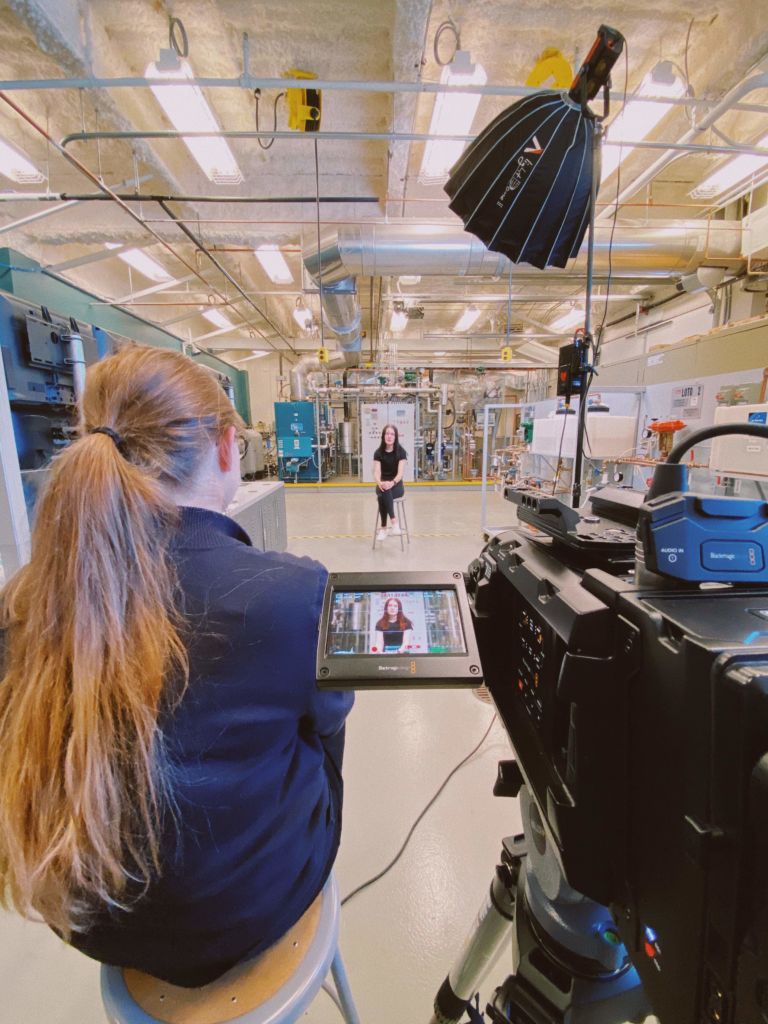
Jake Ammann: If you need something simple, you can film with a phone, but it’s not going to be as high-quality as with a professional camera. But that’s why we exist! If you want something top-notch, you could hire us.
Q: Since livestreaming commencements have become so popular since the pandemic, can you share with us some livestreaming tactics or pitfalls to avoid?
Jake Ammann: Livestreaming especially is one of those things where you can put your phone on a tripod and stream it to Facebook. But to do anything beyond that, you need multiple professional video cameras with people to watch them. And you need to run them into a switcher, and then you need someone to run the switcher. So, you’re either doing it on your phone, or you’re hiring a company to do it. There’s not really much in between.
Sara Sampey: You could maybe use students, but it depends if your school teaches those techniques, and if they have the equipment to do it. There is specific equipment that you need to livestream.
Like Jake had mentioned, you’ll need a switcher, and you want to make sure whatever setup your school has is portable. You’re probably going to need some sort of server. Then you would need to plug it into something that can broadcast the stream, so make sure you have a good Wi-Fi connection. Sometimes the livestream might need a separate Wi-Fi connection than what everyone else is using because streaming video takes up a lot of bandwidth. So, there are a lot of factors, unless you’re just using a phone!
Q: What’s the difference between using an iPhone vs. professional camera equipment?
Jake Ammann: A lot of it has to do with the lenses. The reason new phones are having more and more lenses built into them is because there are physics and optics you can’t really get around. That’s why professional cameras still have big, chunky glass lenses because of the way light works.
In order to get a nice, sharp image on a large-sensor camera, you need a big lens for that large sensor. Since an iPhone camera has to fit in your pocket, it’s got a very tiny sensor, which means it also has very tiny lenses. So, there are physical limitations for that. That’s why a lot of the improvements that are coming in phones now are all software based. There are just a million differences between phone cameras and professional DSLRs and mirrorless cameras.
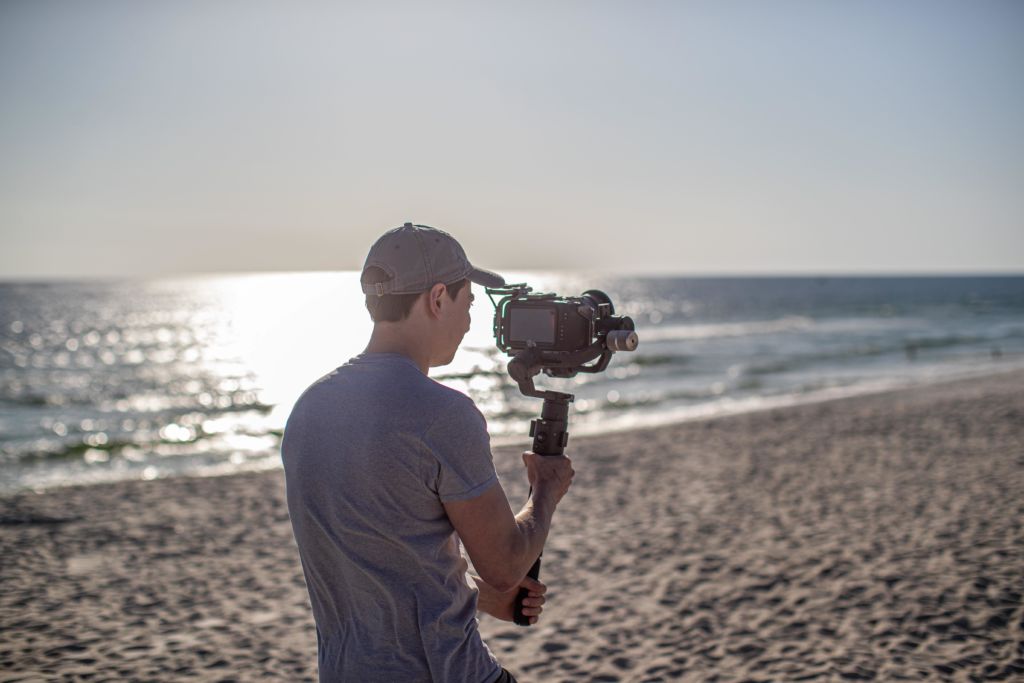
Sara Sampey: I think we could probably talk about it all day. But just because your phone can record in 4K now, doesn’t mean it’s professional. I mean it’s still an amazing image. I would say more than anything, it probably gives you flexibility.
On the phones that do have the zoom-in option, that’s definitely not going to be the same as a professional zoom lens. If you ever go to an event and you see the photographers with the crazy, long lenses that are usually a grayish-white color, that’s really going to get in there. You’re not going to get anything close to that with an iPhone or any smartphone. When you want those intimate moments, unless you’re really getting into the crowd, your iPhone’s not going to work.
Maximizing Marketing with Your College’s Commencement
Q: For many colleges, commencement is when they can stockpile PR material for the rest of the year. How would you advise colleges to maximize their efforts?
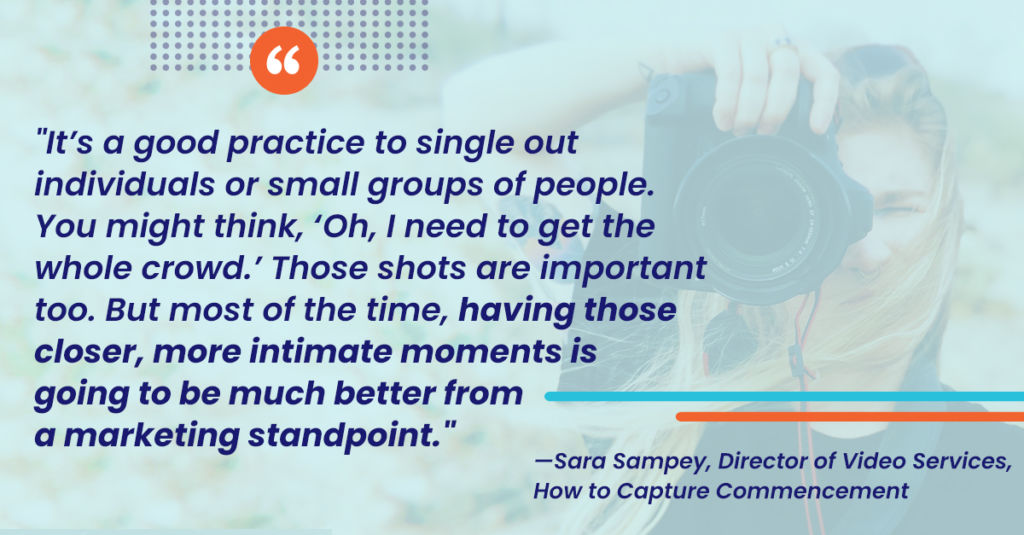
Sara Sampey: My first thought is hiring a professional like Interact. We know what to look for, and we think about things in terms of marketing. Whenever we’re taking footage for colleges, we’re thinking, “How can this be used marketing-wise?”
Otherwise, one video tip I would give is that it’s good practice to single out individuals or small groups of people. You might think, “Oh, I need to get the whole crowd.” Those shots are important too. But most of the time, having those closer, more intimate moments is going to be much better from a marketing standpoint.
I know when we use photo and video from colleges from their commencements, it’s usually the more intimate shots. The students, whether they’re sitting or hugging their family after they walked across stage, whatever it is, it’s usually the more close-up pieces that are the most exciting.
Jake Ammann: If someone at the college has a camera, and they’re willing to come to take pictures for free, that’d be better than just phone pictures. I agree with Sara. We don’t usually use a lot of the pictures of crowds when we’re making pre-rolls — It’s usually individual shots. So, maybe you could focus on a few students that seem charismatic. That being said, unless you’re going through the crowd, you’re going to need a camera with a long lens to get close-up shots of a large event, unless you can pull students aside after and get them on their own.
Otherwise, in big, seated crowds, if you’re standing on the edges, it’s going to be hard to get close-up shots of individuals or small groups of people, unless you’re weaving through the crowd, taking pictures of people.
Sara Sampey: Which you can do! We’re used to doing stuff like that. But, you know, the student in your multimedia course might not be used to that, and your marketing professional may not want to interrupt that way, either. So, it depends on your budget and your staff.
Jake Ammann: You can make any kind of video. You could just shoot slow motion glamour shots and then flash the logo at the end, you could do a 15-second pre-roll, you could record a bunch of interviews, you could do an authentic-narration kind of video. Or, even something between a full ceremony recording and a highlight reel.
I think my most important video tip is to know what kind of video you’re trying to create before you’re out there capturing the event. That way, you can make sure you get all the material you need for the edit. It’s a lot better than just going and trying to film everything, and then getting home and being like, “Okay, well, what can we make with this?”
Key Video Tip Takeaways
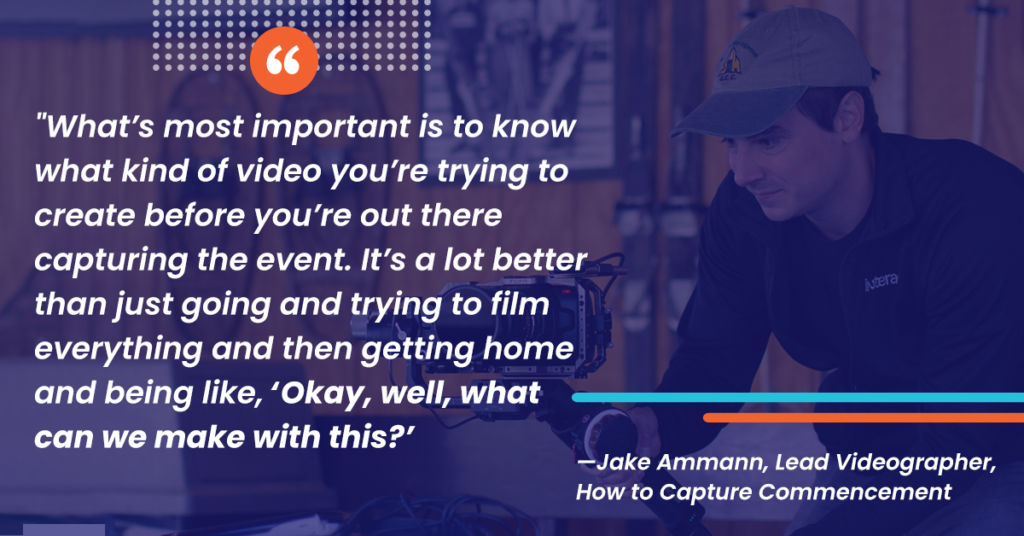
To wrap up, capturing your community college commencement doesn’t have to be complicated. A few key takeaways from Sara and Jake’s pro video tips:
- Double-check any photo policies and ensure you have appropriate signage before recording your commencement ceremony.
- Plan the specific elements you want to record during the event.
- Collaboration with your school, students, and the audience can offer some unique and creative results.
- Smartphones are flexible and convenient, but not always the best option!
Read more about Sara and her experience as our director of video services!
Do you know our Video Virtuoso? Revealing the Vibrant Sara Sampey
Want more tips and tricks? Keep reading & listening:
Podcast Episode: How to Film Large College Events: Creative Tips and Tricks
Strengthening Your Social Media Strategy: Easy Instagram Ideas to Empower Your College’s Identity



